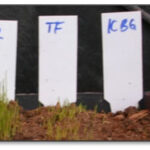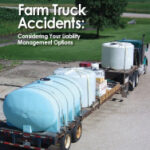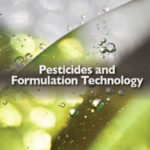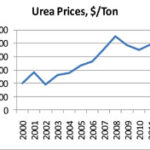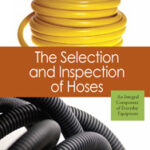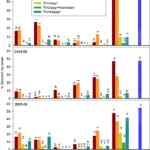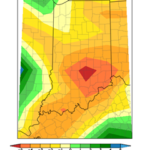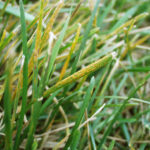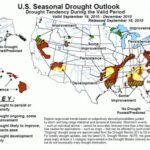Turf Professional
Part III: Controlling broadleaf weeds in newly seeded areas
This turf tip is part of a three part series on spring seeding. Most turfgrass herbicides are intended for use on established grasses. Thus, herbicide use on newly planted grasses should be very conservative. If possible, wait until the grass has gone through several mowings or a full growing season before using chemical weed control. […]
Rejuvenating Turf in 2011: Part II
Part II: Preemergence and postemergence herbicides for crabgrass control in newly seeded areas This turf tip is part of a three part series on spring seeding. Early spring preemergence herbicides are often necessary in Indiana to prevent troublesome annual grassy weeds such as crabgrass and goosegrass. Additionally, these applications help to prevent the emergence of […]
New GDDTracker site is live!
The GDDTracker Team (Michigan, Indiana, Illinois, and Ohio) is proud to launch the latest version of our turf pest tracking web site (http://www.gddtracker.net/). We have been very hard at work to bring you an even better product in 2011. You can now drop a star on the map to mark your location and with the […]
Rejuvenating Turf in 2011: Part I
Part I: Spring seeding options (This turf tip is part of a three part series on spring seeding.) Seeding in spring is difficult and often unsuccessful. However, there are circumstances that warrant a spring seeding: Thin turf due to winter damage Poor turf density due to poor recovery from previous year’s problems, i.e., grub damage, […]
Pesticides and Formulation Technology (PPP-31)
Purdue Extension Publication
This publication explains the benefits and problems associated with the various pesticide formulations. It also can be used to construct a planning or decision-making model for the proper selection of a formulation in a pest control process involving pesticides.
Top Ten Turf Tips of 2010
Top Ten Turf Tips of 2010 Part II: Summer diseases in Residential Turf Part III: Summer weeds: Common summer weeds and their control Part I: Too hot: Why some turfgrass species look poor in summer Color Variation in Residential and Commercial Lawns Crabgrass Control Now is the time to seed lawns and other turf areas […]
What is Driving Recent Increases in Fertilizer Prices?
by Bruce Erickson, Purdue Agricultural Economics Fertilizer prices are on the upswing again, buoyed by the high prices of agricultural products that have stimulated increased demand. While the general U.S. economy struggles to recover from the financial crisis of 2008, the demand for agricultural products continues in a strong position due to favorable exchange rates, […]
Top Ten Turf Tips of 2010
Part II: Summer diseases in Residential Turf Part III: Summer weeds: Common summer weeds and their control Part I: Too hot: Why some turfgrass species look poor in summer Color Variation in Residential and Commercial Lawns Crabgrass Control Now is the time to seed lawns and other turf areas Choosing a Preemergence Herbicide Late Fall […]
The Selection and Inspection of Hoses: An Integral Component of Everyday Equipment (PPP-89)
Purdue Extension Publication
When worn-out hoses fail or don’t work, it becomes very clear how important those inexpensive parts can be. This publication describes design characteristics to look for to correctly select a hose, and offers inspection guidelines to determine when a hose, clamp, or fitting should be replaced.
An Agricultural Retailer’s Guide to Customer Care (PPP-90)
Purdue Extension Publication
In today’s competitive atmosphere, the challenge for agricultural retailers is not simply to adapt to change, but to become exceptional retailers. This publication describes the things customers want from their retailers and offers strategies retailers can follow to improve customer loyalty.
Purdue Turf Club Apparel
Dear Supporter of the Purdue Turf Science Program, The Purdue Turf Club would like to extend our greetings and future holiday wishes to you. As we enter the end of the growing season we begin to consider the upcoming industry conferences. With these comes the opportunity for our Turf Science students to compete in the […]
Is it too late to seed? What should we do?
Recently, the question of whether or not it is too late to seed has been posed to me by many. The drought that we have experienced during our optimum seeding window has pushed back seeding dates for many. Now the question is do I seed now, do a dormant seed, or wait and seed in […]
How late is too late to control broadleaf weeds?
Due to the current drought conditions for many in Indiana we have recommended holding off on herbicide applications until rain returns to drought stressed turf. Herbicides are most effective on weeds that are not drought-stressed and herbicides can be damaging when applied to drought-stressed turf. As we continue to wait for significant rains to return […]
Why do parking lot islands of turf fail in the summertime?
Have you ever noticed that grass located in or near parking lots struggle in heat or drought conditions? In fact, many times grassed areas in or near parking lots are great indicators of when turf is getting dry, as they are normally the first to show heat or drought stress. The most common reason why […]
Dealing with Drought
Many turf professionals in central and southern Indiana are trying to figure out how best to cope with the current drought because it is affecting their normal 1) fall seeding, 2) fertilization, 3) herbicide applications and 4) cultivation. Below are some strategies on how to cope with the current situation. The maps below show illustrate […]
Rick Latin on Sabbatical Leave
Rick Latin will be on sabbatical from October 1, 2010 through March 31, 2011. He will be conducting research on turf disease management and fungicide performance with Dr. Phil Harmon at the University of Florida in Gainesville, FL. Rick will make periodic trips back to campus and will fully participate in the Expo in January. […]
Rust Diseases
Rust is a disease of taller mown turf. Outbreaks are most common on residential lawns, low budget athletic fields, and, occasionally, on golf course roughs. A variety of related fungi cause rust. Ccommon names include leaf rust, crown rust, and stem rust, and the disease occurs almost exclusively on Kentucky bluegrass and perennial ryegrass. Rust […]
Record drought and heat are making seedling establishment a serious challenge
After the extremely stressful summer conditions of 2010 many thin areas in cool-season lawns have been reseeded to restore turf density and improve appearance. Regardless of environmental conditions, establishing a turf from seed is a challenge and the process is as much art as it is science. Seedling establishment requires two steps, germination and development. […]
What to do about deteriorated lawns
This year there were multiple causes for turf decline in home lawns. High temperatures and drought were the primary causes for a decline in turf and an increase in weed incidence. During warm weather (especially temperatures > 87 °F) cool-season grasses like Kentucky bluegrass have trouble making energy while much energy is needed to maintain […]
